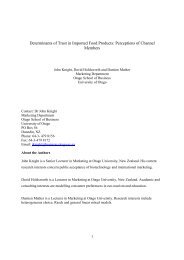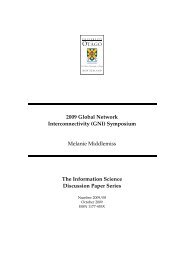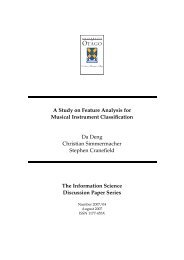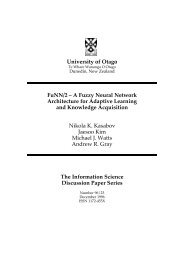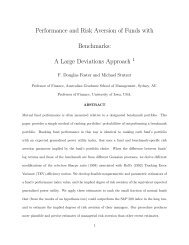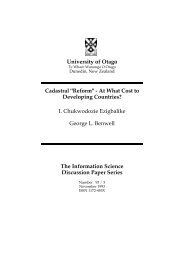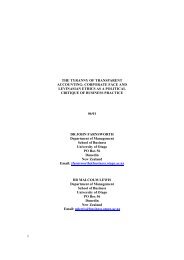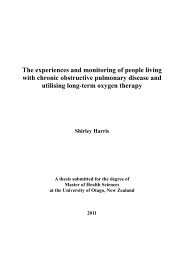Where is R2P grounded in international law? Anne-Marie Judson A ...
Where is R2P grounded in international law? Anne-Marie Judson A ...
Where is R2P grounded in international law? Anne-Marie Judson A ...
Create successful ePaper yourself
Turn your PDF publications into a flip-book with our unique Google optimized e-Paper software.
The International Covenant on Economic, Social and Cultural Rights (1966) also acknowledges<br />
and guarantees rights without d<strong>is</strong>crim<strong>in</strong>ation to race, colour, sex, language, religion,<br />
political or other op<strong>in</strong>ions <strong>in</strong>clud<strong>in</strong>g national or social orig<strong>in</strong>, birth and other status. 215<br />
Th<strong>is</strong> particular Convention goes beyond general protection duties of a state to protect<br />
civilians under grave threats. It <strong>in</strong>cludes the right to work, 216 the right to steady<br />
economic, social and cultural development and the right to fundamental and<br />
economic freedom. 217 It also covers the right to a m<strong>in</strong>imum wage without d<strong>is</strong>t<strong>in</strong>ction<br />
of any k<strong>in</strong>d, re<strong>in</strong>forc<strong>in</strong>g non-tolerance for d<strong>is</strong>crim<strong>in</strong>ation <strong>in</strong> the work place. 218 Th<strong>is</strong><br />
non-d<strong>is</strong>crim<strong>in</strong>ation policy extends to equal opportunity for promotion, work<strong>in</strong>g<br />
conditions, holidays and the right to jo<strong>in</strong> trade unions. 219<br />
It ascribes special conditions for pregnant women and children. The state signatory<br />
must protect children from economic and social exploitation and age limits are<br />
imposed on the state to ensure protection of the vulnerable. Women are given special<br />
rights for pregnancy leave. 220 The state <strong>is</strong> assigned the responsibility to cont<strong>in</strong>uously<br />
improve production methods, conservation and d<strong>is</strong>tribution of food, which <strong>in</strong>cludes<br />
be<strong>in</strong>g considerate of import and export problems associated with need. 221 The<br />
responsibility extends to the prevention, treatment and control of epidemics,<br />
occupational and other d<strong>is</strong>eases. 222<br />
Although th<strong>is</strong> Convention goes beyond grave breaches aga<strong>in</strong>st humanity <strong>in</strong><br />
term<strong>in</strong>ology it also shows that the state <strong>is</strong> responsible for the underly<strong>in</strong>g problems that<br />
create grievances <strong>in</strong> the home, <strong>in</strong> the work place and the general environment. It<br />
shows us how these grievances can be prevented if the state complies with their duties<br />
<strong>in</strong> <strong>in</strong>ternational <strong>law</strong>. It also shows how <strong>in</strong>dividual grievances can turn <strong>in</strong>to collective<br />
grievances based on race, gender or culture. Differential treatment from the<br />
government or employers could become an underly<strong>in</strong>g source of collective grievance.<br />
215 United Nations. (1966). The International Covenant on Economic, Social and Cultural Rights. <br />
New York : United Nations. As of June 2011 there were 160 parties to the Convention <br />
216 Article 6. (1) <br />
217 Article 6 (2) <br />
218 Part iii, article 7 (a) and (i) <br />
219 Part iii article 7 (d) and 8 (1) <br />
220 Article 10 <br />
221 Part iii article 11 (b) <br />
222 Part iii, articles 12 (1), 12 (2), a, 12 (2) b, and 12 (2) c <br />
<br />
71




